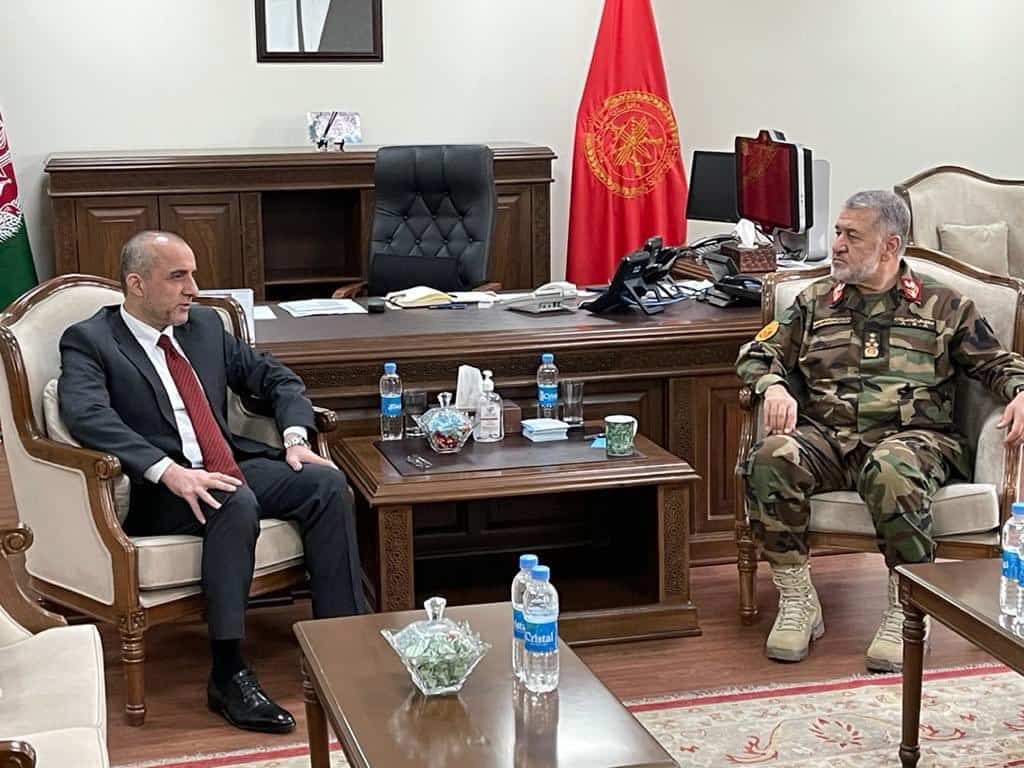
The Taliban’s “martyrdom battalion” attacked the home of Afghanistan’s acting Defence Minister Bismillah Mohammadi in Kabul yesterday evening. Mohammadi survived the assassination attempt.
The Taliban quickly claimed responsibility for the operation, which reportedly left at least eight people dead and wounded more than 20 others. In a statement posted in several languages online, the group also threatened more attacks on Afghan officials in the near future.
Afghan President Ashraf Ghani appointed Mohammadi to his current post in June as part of shakeup in the aftermath of the Taliban’s swift territorial advances earlier this year. The Taliban clearly wanted to eliminate Mohammadi in what would have been a blow to the Afghan military’s new leadership.
The jihadists’ reportedly used a car bomb to pave the way for several gunmen to assault Mohammadi’s home.
According to TOLOnews, the attack “took place at around 8pm local time in Shirpoor area in Kabul’s District 10 where most of the high-ranking government officials house are located.” At least four Taliban operatives, and perhaps as many as seven, took part in the raid, according to Afghan security sources.
In its statement claiming responsibility, the Taliban said that Mohammadi’s residence was targeted by “several brave mujahideen of the Islamic Emirate’s Martyrdom Battalion, armed with light and heavy weapons, as well as a car bomb.” The group claimed that an “important meeting of the enemy” was being conducted at the defense minister’s residence “at the time of the attack.”
The Taliban portrays the “martyrdom attack” as the first in a series “of retaliatory operations against key figures and leaders of the Kabul administration,” claiming that they are ordering attacks on civilians and forcing them to flee their homes throughout the country. Referring to itself as the “Islamic Emirate,” the Taliban says it can no longer “remain indifferent” to the “crimes of the occupier and the domestic enemy” and will take action against them.
While the Taliban blames the Afghan government for the current wave of violence, the reality is that the jihadists have refused multiple entreaties for a ceasefire. The Taliban launched a massive offensive across the country on May 1 and is currently attempting to overrun several provincial capitals. While civilians have been killed in the Afghan government’s counteroffensive, most of the recent violence is directly attributable to the Taliban’s decision to fight for victory and eschew any real peace.
The United Nations Assistance Mission in Afghanistan (UNAMA) has documented a spike in civilian casualties during the first six months of 2021, finding that “non-suicide” improvised explosive devices (IEDs) used by “Anti-Government Elements” were the “leading cause” of civilian deaths and injuries. Ground engagements fought between the Taliban and Afghan national security forces were the second leading cause, followed by “targeted killings by Anti-Government Elements.” Therefore, two of the top three causes of civilian casualties this year are tactics employed by the Taliban, its allies and other jihadists opposed to the Afghan government. And the ground engagements between the two sides are mainly the result the Taliban’s offensive.
General Bismillah Mohammadi is one of the main Afghan officials responsible for countering the jihadists’ campaign. Since May, most of the operations conducted by the Taliban and al Qaeda groups in Afghanistan have occurred outside of the Afghan capital. But the attack on Mohammadi’s residence demonstrates that the Taliban plans to expand its operations into the heart of Kabul once again.
The Haqqani Network, an integral Taliban subgroup that controls key leadership positions within the insurgency’s hierarchy and is closely allied with al Qaeda, has a strong facilitation network in Kabul. The Haqqanis could deploy more of its “martyrs” in the weeks to come, as it has been responsible for multiple large-scale attacks inside Kabul in the past.
The raid on Mohammadi’s house is similar to other inghimasi operations conducted by the Taliban and al Qaeda in the past. (The Islamic State, which is at odds with the Taliban and al Qaeda, utilizes inghimasi tactics as well.) In general, inghimasi attacks often rely on vehicle-borne improvised explosive devices (VBIEDs) to clear the way for a small team of gunmen who immerse themselves at an enemy location. These gunmen are typically willing to fight to the death. Such was the case at Mohammadi’s home.







